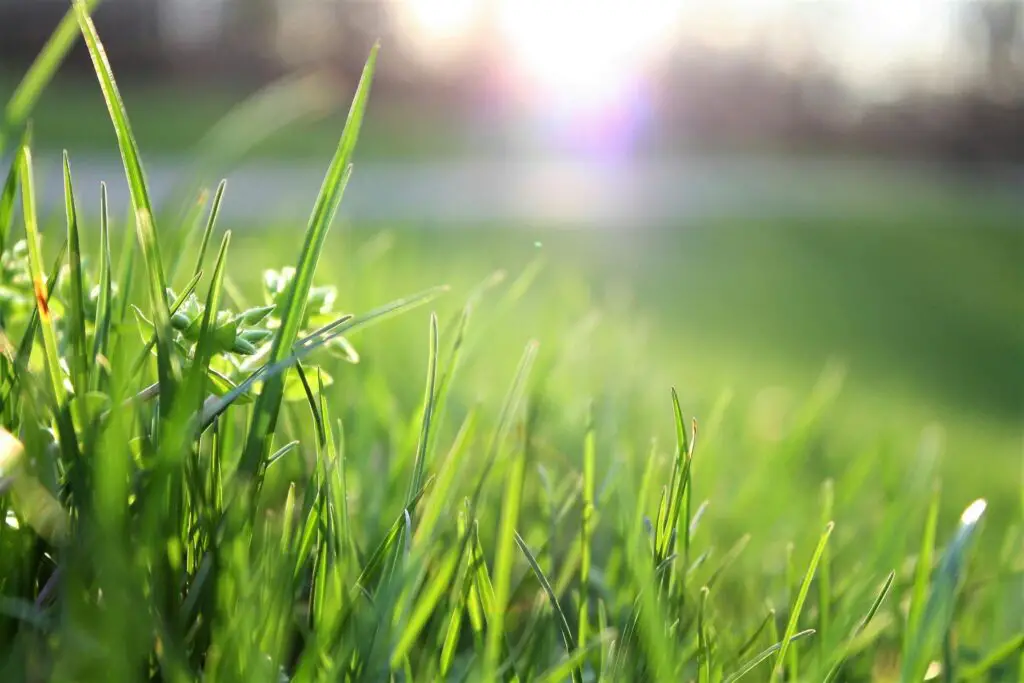Homeowners’ ideal is to have that which is at once a living green rug which also draws in the eye. But that picture-perfect grass is not the work of just a good watering and mowing routine; rather, it’s in the care that allows your lawn to breathe and grow. That’s why, at the core of great lawns, lies understanding the Best Time to Aerate Lawn for optimal growth and health.
Aeration is what lawn care pros use to their advantage. It puts in the air, water and nutrients to the roots, which in turn promotes deep growth and thick turf. At the right time it is a very easy process which may transform a dull, compacted yard into a healthy, thriving landscape. You may be dealing with heavy foot traffic or clay soil or just want to improve your lawn’s health; either way, timing is key.
In this guide we will go over a set of 20 specialist tips from us which will help out with the science, what time to do it, and which tools to use for proper lawn aeration. From what you should be aware of in different seasons to what equipment will work best for you, we have included it all that will see your grass turn around and become greener, thicker, and more resistant over the year. Let’s get started. Your ideal lawn is just a start-off!
💡 Tip: Always start with the soil—healthy soil equals healthy grass. Aeration restores life to compacted, neglected lawns.
- 1 Best Time to Aerate Lawn
- 2 Understand Why Aeration Is Essential for Lawn Health
- 3 Identify Your Grass Type First
- 4 Aerate Cool-Season Grasses in Fall or Early Spring
- 5 Aerate Warm-Season Grasses in Late Spring to Early Summer
- 6 Soil Moisture Must Be Just Right
- 7 Test for Compaction Before Deciding to Aerate
- 8 Avoid Aerating During Drought or Extreme Heat
- 9 Mow Low Before Aerating
- 10 Mark Hidden Lines and Sprinkler Heads
- 11 Choose Core Aeration Over Spike Aeration
- 12 After aerating, leave the plugs in the lawn.
- 13 Combine Aeration With Overseeding for Best Results
- 14 Follow Up With Fertilizer for Maximum Growth
- 15 Water Daily After Aeration (If Overseeding)
- 16 Aerate at Least Once a Year for Heavily Used Lawns
- 17 Avoid Aerating When Weeds Are Active
- 18 Watch the Weather Before Scheduling
- 19 Use Proper Equipment for Your Lawn Size
- 20 Don’t Aerate Newly Seeded Lawns Too Soon
- 21 Track Results and Adjust for Next Season
- 22 🌱 Final Thoughts
Best Time to Aerate Lawn

Understand Why Aeration Is Essential for Lawn Health
Aeration is not just a luxury—it’s a vital maintenance step. Over time, foot traffic, lawn equipment, pets, and natural settling compress the soil, squeezing out the pockets of air that roots need to thrive. Without oxygen, your grass roots suffocate, leading to thin, weak patches that are more prone to disease and weed invasion. Aeration combats this by pulling plugs from the ground, reducing compaction and allowing the soil to expand and recharge. The benefits are long-term and build with consistency, often showing dramatic improvements in just one season.
💡 Tip: If your lawn looks lifeless despite watering and fertilizing, compaction is likely the real culprit—start aerating.
Identify Your Grass Type First
Before you schedule your aeration, identify your grass type. This step ensures you align the process with its natural growth cycle. Cool-season grasses—like Kentucky bluegrass, fescue, and rye—grow best in spring and fall, while warm-season grasses—like Bermuda, .In late spring and summer, Augustine and Zoysia bloom. Aerating outside their growing season can do more harm than good, leaving grass vulnerable when it’s not actively growing and healing. Knowing your grass type means you’ll aerate at the precise moment it can bounce back with power.
💡 Tip: Unsure about your lawn type? Most U.S. northern states grow cool-season grasses, while southern regions favor warm-season varieties.
Aerate Cool-Season Grasses in Fall or Early Spring
Cool-season grasses thrive in moderate temperatures, which makes fall the prime time to aerate them. The soil is still warm, encouraging strong root growth, while the cooler air prevents stress. Early spring is the next best option, but only before temperatures rise too high. These seasons allow the lawn to recover quickly and fill in thin areas, especially when paired with overseeding and fertilization.
💡 Tip: Combine fall aeration with overseeding for cool-season grasses to thicken up the lawn and crowd out weeds before winter.
Aerate Warm-Season Grasses in Late Spring to Early Summer
For warm-season grasses, aerate just as they hit their growth stride—typically late spring through early summer. During this time, the grass is strong and can recover quickly. Aerating too early can expose dormant grass to stress, while doing it too late may cause issues if summer drought kicks in. This timing helps improve heat tolerance, which is vital for lawns in hot climates.
💡 Tip: The moment your warm-season grass turns fully green and starts growing, it’s ready for aeration.
Soil Moisture Must Be Just Right
Soil moisture has a major impact on aeration success.Too wet, and you’ll clog the machine or tear up your lawn. Too dry, and the tines won’t penetrate deep enough to pull effective cores. Aim to aerate one day after light rainfall or a thorough watering. You want the soil to be soft but not muddy—like a freshly baked brownie, not soup.
💡 Tip: Apply the screwdriver test to determine whether the soil is suitable for aeration if a screwdriver can be inserted into the ground with only a little effort.
Test for Compaction Before Deciding to Aerate
You don’t need to guess if your lawn is compacted—test it. Push a long screwdriver or metal rod into the ground. If it only penetrates a couple of inches before hitting resistance, your soil is compacted. Lawns with heavy foot traffic or clay-heavy soils often suffer from this. Annual aeration is highly recommended for these conditions to break the cycle of compaction.
💡 Tip: If your lawn doubles as a playground, dog zone, or sports field, aerate at least once a year to keep soil from turning into concrete.
Avoid Aerating During Drought or Extreme Heat
While aeration helps grass develop deeper roots, doing it during extreme heat or drought can backfire. Stressed grass won’t recover easily, and the open holes can allow more moisture to evaporate, worsening the damage. Always wait until the lawn is not in survival mode and is actively growing. Irrigate for a few days before aeration to help the lawn revive if necessary.
💡 Tip: A lawn that is green and flourishing indicates that it is healthy enough for aeration; dormant or brown grass requires watering first.
Mow Low Before Aerating
Before you aerate, mow the lawn shorter than usual—but don’t scalp it. The appropriate height for cool-season grass is 1.5 to 2 inches, whereas the ideal height for warm-season grass is roughly 1 inch.This helps the aerator reach the soil without interference and makes cleanup easier. Removing excess grass also exposes more soil, which is great if you plan to overseed afterward.
💡 Tip: Bag the clippings before aeration. It prevents thatch build-up and lets new seeds (if overseeding) reach the soil better.
Mark Hidden Lines and Sprinkler Heads
Before running heavy equipment across your lawn, take time to mark irrigation heads, utility boxes, shallow cables, and landscape lighting. Aerators go deep—often up to 3 inches—and can easily destroy hidden items. Use flags, landscape spray paint, or stakes to keep both your equipment and underground systems safe.
💡 Tip: Call 811 or your local utility locator if you’re unsure what lies beneath your lawn.
Choose Core Aeration Over Spike Aeration
Spike and core aerators are the two main varieties. Spike aerators push holes into the soil but can worsen compaction by pressing soil to the side.Core aerators remove plugs of soil, reducing compaction and encouraging root expansion. For serious lawn improvement, always opt for core aeration—it’s what pros use.
💡 Tip: Rent a gas-powered core aerator for best results or hire a lawn service if you have a large property.
After aerating, leave the plugs in the lawn.
Once you’ve completed aeration, don’t rush to rake or bag the cores—leave them where they fall. These soil plugs will decompose spontaneously over a few weeks due to microbial activity, rainfall, and mowing.As they decompose, they return valuable nutrients to the soil and fill in the holes they left behind. This process improves microbial life and helps reduce thatch buildup over time, creating a richer soil environment.
💡 Tip: Water the plugs lightly every day for the first week to speed up their breakdown and reabsorption into the turf.
Combine Aeration With Overseeding for Best Results
Aeration opens up the perfect window for overseeding. The holes left behind act like seed beds, helping seeds settle in and germinate without being blown or washed away. This method dramatically increases seed-to-soil contact and encourages uniform growth. For thinning or patchy lawns, this combination transforms sparse grass into dense, green turf in just one season.
💡 Tip: Use a seed variety that matches your current grass or consider a blend with disease-resistant traits for better resilience.
Follow Up With Fertilizer for Maximum Growth
After aeration and (if applicable) overseeding, feed your lawn with a quality, slow-release fertilizer.Because of the loosening of the soil, nutrients can reach the root zone and penetrate deeply. The best results are obtained when you feed immediately after aeration, providing your lawn with the nourishment it needs to recover and become more resilient. For cool-season grasses, apply a potassium-rich fall fertiliser. For warm-season lawns, a balanced spring fertilizer works best.
💡 Tip: Use a broadcast spreader for even fertilizer distribution and avoid over-fertilizing, which can burn tender new roots.
Water Daily After Aeration (If Overseeding)
If you overseed after aerating, consistent watering is crucial. The soil should stay moist but not soggy to encourage seed germination and root establishment. For the first week, water lightly twice a day; for the next two weeks, water once a day. Then resume your regular watering schedule.This ensures the young seedlings have the best chance of thriving without drying out.
💡 Tip: Avoid watering in the late evening—moisture sitting overnight increases the risk of fungal diseases.
Aerate at Least Once a Year for Heavily Used Lawns
Lawns that endure frequent foot traffic, pets, kids, or machinery are prime candidates for annual aeration. All that activity compresses the soil quickly, and without routine aeration, your grass may weaken and thin out. Aerating once per year keeps soil loose and helps roots grow deeper and stronger, especially in clay-heavy soils.
💡 Tip: Schedule your aeration the same time every year—just like you service your car, your lawn thrives on routine maintenance.
Avoid Aerating When Weeds Are Active
Aerating when your lawn is full of weeds—especially aggressive varieties like crabgrass—can actually help spread them. Weed seeds can fall into the freshly made holes and take root quickly.Rather, aerate when the weed population is under control and the grass of your choice is actively growing. If you’ve recently applied a pre-emergent herbicide, wait about 6–8 weeks before aerating.
💡 Tip: Post-emergent herbicides can be applied a week or two after aeration if needed, not right before.
Watch the Weather Before Scheduling
Don’t aerate if heavy rainfall is forecasted within 48 hours. Excess water can cause the soil to collapse, undoing all the progress made during aeration. Similarly, avoid aerating during dry spells unless you’re prepared to water heavily before and after. A stable, mild-weather window ensures optimal results.
💡 Tip: The best time to aerate is usually a cool, overcast day after light rainfall—easy on the lawn and easy on you.
Use Proper Equipment for Your Lawn Size
For small lawns, a manual core aerator or spiked shoes might work in a pinch—but for medium to large lawns, powered equipment saves time and energy. Rental shops offer walk-behind gas aerators that can handle a half-acre lawn in under an hour. For very large properties, consider hiring professionals with ride-on aerators.
💡 Tip: Manual aerators can be exhausting—don’t underestimate the time or effort involved on larger plots.
Don’t Aerate Newly Seeded Lawns Too Soon
If you’ve recently seeded your lawn, wait at least one full growing season before aerating. Young roots need time to establish, and aerating too early can rip them up, setting growth back significantly. Once your lawn has matured and filled in, future aeration will only help it flourish.
💡 Tip: Mark your calendar for aeration at least 12–16 weeks after your last seeding session to be safe.
Track Results and Adjust for Next Season
The best lawn care is strategic, not random. After you aerate, monitor how your lawn responds. Are you seeing thicker growth? Fewer weeds? Deeper green color? Take notes. Every lawn is unique, and what works one year might need adjusting the next. Use your observations to fine-tune aeration timing, frequency, and what supplements (like seed or fertilizer) give the best ROI.
💡 Tip: Keep a lawn care journal or calendar. It helps you plan next year’s strategy based on this year’s success.
🌱 Final Thoughts
Aeration is more than poking holes—it’s a reset button for your soil. Done right, and at the right time, it’s one of the most powerful tools for transforming average grass into lush, envy-worthy turf. From choosing the correct season based on your grass type to following up with overseeding and fertilization, these expert tips will help you maximize every pass of the aerator. Stick with it, and your lawn will reward you with thicker, greener growth year after year.




